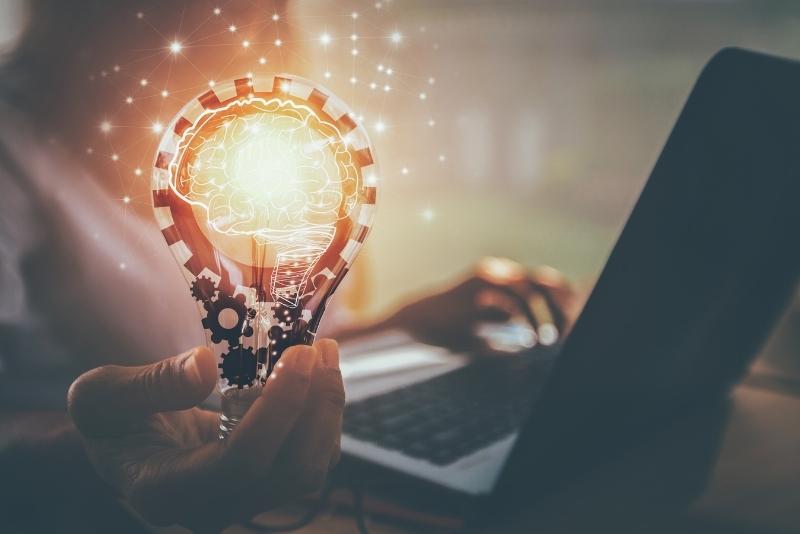In an ever-changing business environment, it can be tough to understand the next assignment technology will provide us with. Businesses are adapting AR & VR technologies to accelerate the production or the quality of work. This post aims to look at the position of AR & VR technologies for now and for the future in business.
What is AR & VR?
To start with, Augmented Reality (AR) is computer-generated content that senses the real-world environment and imitates content. It is an alive or indirect physical appearance created by enriched sound, image, graphics, and GPS data. An example of AR can be the popular 2016 game Pokémon GO. That combines the real world with fictional characters by using a smartphone’s GPS and clock. This determines your location on the map, so you can catch the pocket monsters around. Another example that is more business-related is the Swedish furniture giant Ikea. Ikea just started to use Augmented Reality on their catalogs and app called Place. This gives customers a better idea of how home goods would look in customers own homes. Also provide step-by-step instructions on their application called Assemble to help customers assemble the products through AR, again. (Link for the video Place App – Assemble App)
Virtual Reality (VR) is a computer-generated simulation. The environment in VR is completely artificial. Also presents three or more dimensions with an interactive environment through a headset or special electronic devices. Companies such as Sony and Oculus are producing hardware. Moreover, are improving VR technologies to supply gamers with extra realistic and exciting experiences. Militaries and Medicals use the interactive nature of VR in their training programs. UK and US train soldiers by creating threatening environments using sound effects and visuals. A soldier gets to be trained in subjects such as bomb disposal by being immersed into a battlefield or flight simulation without having the real risk factor.

Progress of AR & VR
In the past years, AR and VR technologies have not been exactly like the user dreamt of. Especially from a business point of view. However, just like every other piece of technology has entered our lives, it should be considered that AR and VR technologies had their fair share too. Some of the problems or prejudgments businesses are having about the technology can be sorted as;
- Price Tag
- Practicality
- Storage & Speed
To start with the price point, many businesses want to take the initial steps towards wanting to utilize the benefits of AR and VR. However, they undergo a basic consumer bias called the familiarity principle which explains people tend to buy from brands they are familiar with. For example, many of the manufacturers in the industry want to adopt remote help with smart glasses to their business to enhance the production process, the first smart glass they usually go for is the Microsoft HoloLens 2 which possesses a $3.500 price tag. Since there are more than 100 technicians in a factory. This means $3500×100=$350.000 for a mid-size factory to spend solely on hardware. Yet there are many start-ups and rather small business than Microsoft that sells smart glasses and the required SaaS for the manufacturers to advance their business for eligible prices.
There are many features to consider before buying the hardware to incorporate it with AR and VR.
It is not pleasant to work with heavy or unergonomic headsets, especially in a factory where it can affect the technician’s work quality negatively. Therefore, now headsets are more suitable to their area of use. They weigh lighter and are more comfortable compared to a couple of years ago. The image and sound quality also improved significantly to enhance the user experience and make it more realistic.
Smart glasses providers made the necessary changes to adapt the hardware to the field of work.
For example, some of the smart glasses have the property of muting the background noise just as needed so that the technicians in the factory and the experts can communicate smoothly by hearing each other and the machine worked with. With the new higher performance of 5G, the network will provide virtual connection to everything including machines, objects, and devices. Thus, the internet speed when working with a headset will be much faster. We focused more on the hardware side of the story however with equipment materials the software that provide the service made serious progress too. The storage for hardware pieces that used to be a problem, now with Cloud system it is possible to keep files in a remote database and retrieve them on demand.
Future effects of AR & VR on the Global Economy
Many businesses over the last decade transformed the way they work to the digitalization of the business process. The simplest digitalization example can be converting sending a post by going to the postal service to sending an email. More complex business processes are digitalizing. Training new employees through online meetings or a new software designed only for training operations. Both in including technologies such as AR/VR and transforming the process to a digital environment. The goal is to accelerate the work and collect data to optimize the business to move forward.
As of now, the investment numbers on AR/VR are growing. In 2020, according to IDC’s findings estimated spending was up to $18.8 billion, up 78.5% from 2019. And as well as transforming business processes, daily consumers are also expecting businesses to use AR more often. As mentioned before Ikea is using AR to deliver a better shopping experience. The adoption of AR and VR implications by daily consumers is very interesting.
In a PwC report, economists estimate that by the year 2030 the AR and VR’s contribution to the global economy for businesses will be $1.5 trillion.
This accounts for a significant change from the 2019 GDP contribution of $49.4 billion. Especially within one year, from 2019 to 2020, there is a major change also. In 2020 with the Covid-19 outbreak the search for remote technologies increased substantially, the contributions of the technologies were double of what they were in 2019 and contributed $95.7 billion to global GDP. Besides profiting businesses, the spread use of these new technologies will contribute to GDP by creating new employment opportunities in technology departments as well. By the year 2030, less than 10 years from now, AR and VR technologies are expected to boost the global GDP by %2.
With many uses, AR and VR applications offer a variety of solutions to businesses, consumers, and employees.
From production to training to advertising AR and VR technologies can be used in the most creative and effective ways. Businesses should consider this new technology as an investment that will have its returns in a very short amount of time. In this current environment businesses that will adapt to tech, development can gain a competitive advantage over their rivals. According to Mobile Marketer, only %1 of retailers are using AR. Especially in online shopping AR content will be demanded increasingly by the consumers to have a better sense of what they are buying since it increases their confidence in the product by %71.
In conclusion, AR/VR products are not just a trend or entertainment subject. They have a serious potential to affect the economy and business activities. And companies should invest more in their research & development to test AR and VR products.



